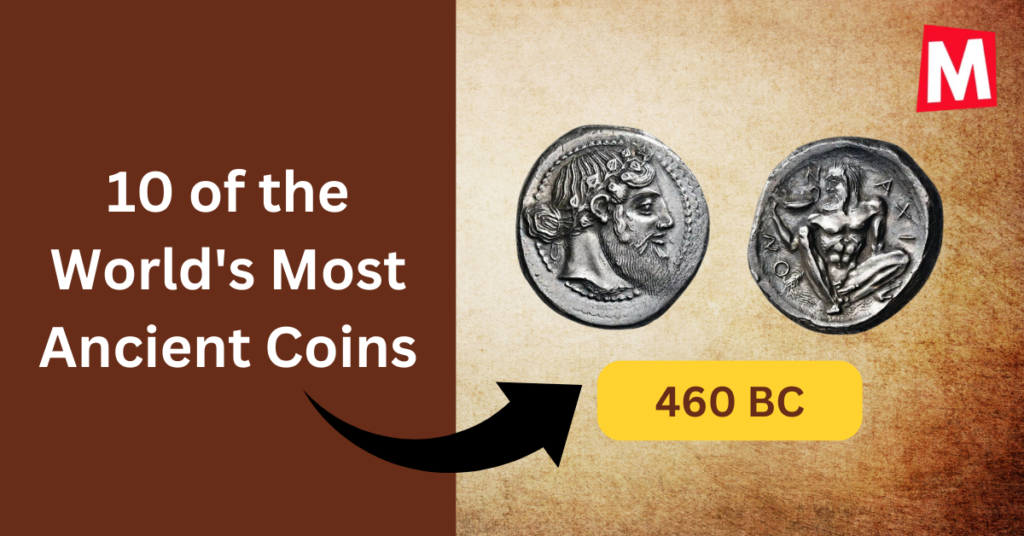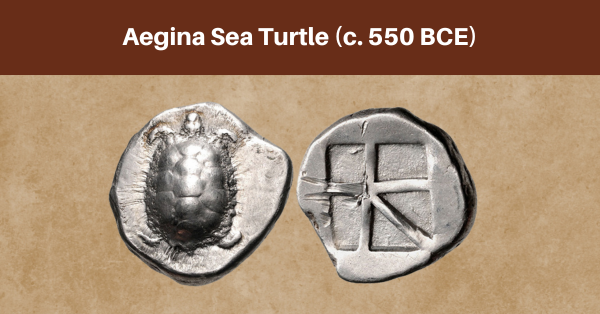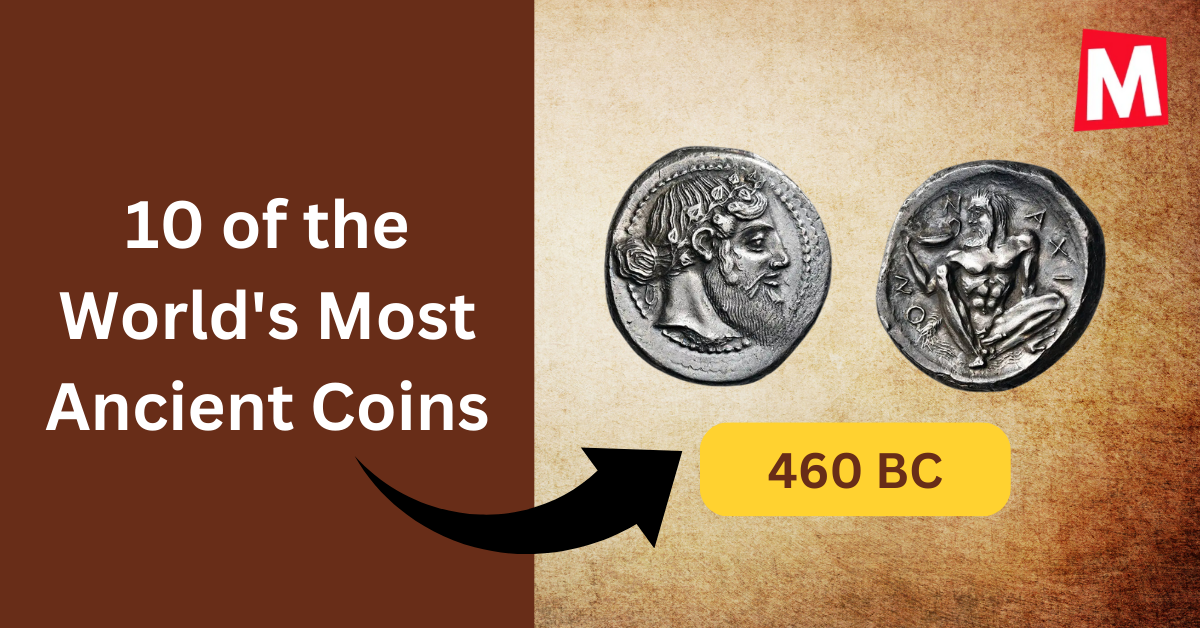Coins are fascinating artifacts that tell the story of human civilization. They are much more than pieces of metal; they are tangible links to our past, representing the economies, cultures, and rulers of bygone eras. Some of the oldest coins in the world have witnessed the rise and fall of empires, and their designs reflect the ingenuity and artistry of their time.

In this article, we’ll explore 10 of the world’s most ancient coins, uncovering their origins, unique features, and historical significance.
10 of the World’s Most Ancient Coins
1. Lydian Lion (c. 600 BCE)
The Lydian Lion holds the distinction of being the world’s first coin. Minted in the ancient kingdom of Lydia (modern-day Turkey), it was made from electrum, a natural alloy of gold and silver. Weighing about 4.7 grams, this coin features the head of a roaring lion, symbolizing the strength and power of the Lydian kings. It revolutionized trade by introducing the concept of standardized currency.
2. Persian Daric (c. 480 BCE)
Introduced by Darius I of the Achaemenid Persian Empire, the Persian Daric was a gold coin with a purity of 95.83%. It depicted a crowned king holding a bow and spear, emphasizing the military prowess of Persia. This coin became a standard for trade across Western Asia and beyond until Alexander the Great replaced it with his own coinage after conquering Persia.
3. Aegina Sea Turtle (c. 550 BCE)
One of the earliest coins from Greece, the Aegina Sea Turtle was minted on the island of Aegina. Made of silver and weighing about 12.2 grams, it featured a sea turtle on one side and a geometric pattern on the other. The turtle symbolized the island’s maritime power and economic strength, and the coin became a widely accepted currency in the ancient Mediterranean.

4. Ionian Hemiobol (c. 600 – 500 BCE)
The Ionian Hemiobol, a tiny silver coin weighing just 0.4 grams, was minted in Cyme, Ionia (modern-day Turkey). Its design showcased a horse’s head on one side and a simple geometric pattern on the other. Used for small transactions, this coin reflects the influence of the earliest Lydian coinage and the evolving trade practices in ancient Greece.
5. Hallaton Silver Coin (c. 211 BCE)
Discovered in Hallaton, England, as part of a treasure hoard, the Hallaton Silver Coin was a Roman denarius. Weighing 3.9 grams, it featured the helmeted goddess Roma on one side and the mythical twins Castor and Pollux on horseback on the other. This coin offers evidence of trade between Britain and Rome before the Roman conquest of Britain in 43 CE.
6. Etruscan Gold Coin (c. 300 BCE)
Minted in Populonia, the Etruscan Gold Coin is a rare relic of the once-thriving Etruscan civilization in central Italy. Made of gold and weighing about 8.1 grams, it displayed a human head—possibly a deity or ruler—on one side and a punch mark on the other. The coin represents the wealth and craftsmanship of the Etruscans, who were later absorbed into the Roman Republic.
7. Chinese Knife Coin (c. 400 – 300 BCE)
Unlike traditional round coins, the Chinese Knife Coin was shaped like a knife or spade, tools that symbolized labor and trade. Issued by the Yan State in northern China, it was made of bronze and weighed about 40 grams. The inscriptions on the blade denoted its value and issuing authority. This coin reflects the unique monetary traditions of ancient China before the advent of round coins.
10 Rare and Most Valuable Liberty Head V Nickels
10 Rare and Most Valuable Liberty Head V Nickel
8. Macedonian Tetradrachm (c. 336 – 323 BCE)
The Macedonian Tetradrachm was introduced by Alexander the Great and became a universal currency across his vast empire. Made of silver and weighing about 17 grams, it depicted Heracles wearing a lion skin on one side and Alexander’s name with symbols like a bow and club on the other. This coin facilitated trade and cultural exchange from Greece to India.
9. Ptolemaic Gold Octodrachm (c. 285 – 246 BCE)
Minted by Ptolemy II in Egypt, the Ptolemaic Gold Octodrachm was a stunning coin weighing 27.8 grams. It featured the deified portrait of Ptolemy I wearing a diadem and the horn of Ammon, symbolizing divine kingship. The reverse displayed an eagle standing on a thunderbolt. This coin epitomized the wealth and power of the Ptolemaic Kingdom, a center of culture in the Hellenistic world.
10. Roman Aureus (c. 27 BCE – 476 CE)
The Roman Aureus was a gold coin minted during the Roman Empire. Weighing about 8 grams, it showcased the emperor’s portrait on one side and symbols of achievements, virtues, or deities on the other. As a standard roman currency and propaganda tool, the Aureus reflected the political and social evolution of Rome over centuries.
Final Thoughts
These ancient coins are much more than historical curiosities; they’re windows into the economic, cultural, and artistic achievements of early civilizations. Each coin tells a unique story of trade, power, and innovation. Imagine owning one of these treasures—it’s like holding history in the palm of your hand!
